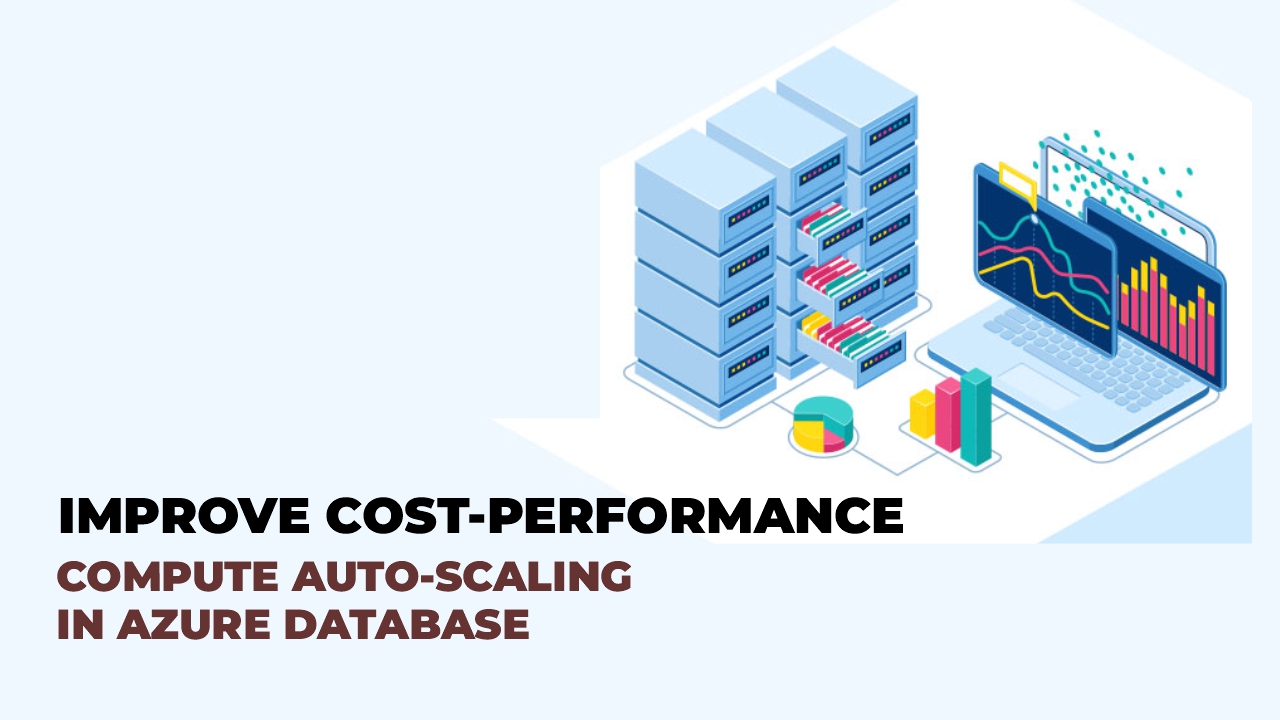No matter, whether a company is migrating it’s on premise apps to Azure or designing a new app from scratch, Azure SQL Database is more likely to be used because it is the crux of many applications running on Azure. Azure SQL Database serverless is beneficial for situations where there is an unpredictable load on the database or has huge variations over time. The Azure SQL Database does not have built-in auto-scaling functionality so the users need to define rules for scaling up or down the database instance. Improving compute resource allocation to achieve performance goals while controlling costs is difficult, especially for a database with an unpredictable load. However, the Serverless offering of Azure SQL Database helps address this situation.
Azure SQL Database serverless is the latest compute tier, which optimizes price performance and simplifies performance management for databases having unpredictable usage. The range of applications that normally fit the usage pattern of the serverless database includes dev/test databases, e-commerce systems, line-of-business apps, and content management. This database is also ideal for new applications with uncertain compute sizing or where workloads require frequent rescaling to reduce costs. The SQL database serverless comes equipped with fully-managed, built-in intelligence benefits of SQL database that accelerate app development, reduce operational complexity, and reduce total costs.
The provisioned compute tier in SQL Database allocates a certain amount of compute resources for a fixed price and is charged per hour, whereas serverless automatically computes depending on workload demand and charges for compute used every second. The provisioned compute databases should either over-provision resources at a price to accommodate peak usage or under-provision resources that may risk poor performance. The provisioned compute databases over longer time scales can be rescaled but need to predict usage patterns or write custom logic to activate rescaling based on performance metrics, thereby contributing to the development and operational complexity. In SQL Database serverless, the service manages the compute scaling within configurable limits to perfectly size resources. It also has an option to automatically pause the database during inactive periods and resume the database when activity returns.

Microsoft Azure SQL Database is a great choice for businesses that require a database per application or database per customer. Businesses have several multiple compute and service tiers to choose from depending upon their IO and workload needs. Microsoft provides several ways to help businesses save on compute costs by providing the serverless tier. The compute in SQL Database serverless is priced depending upon the amount of memory and CPU used every second. In the case of a paused database, only storage charges are billed thus providing price optimization. The objective of the auto-pause functionality is to save costs. When the database has not been in use for a set duration then it goes into sleep and hence its compute resources are reallocated and compute charges are not incurred and only storage costs are incurred. If the auto-pause is not used then the compute resources will be charged which may cost a lot.
Cost Optimization in Azure SQL
Like all Azure services optimizing Azure SQL database help to increase efficiency while reducing cost. With multiple pricing and configuration options available in Azure SQL, businesses get the most resources for their every dollar.
Pricing Options
Microsoft Azure SQL Database offers different pricing options like reserved capacity and Azure hybrid benefit. Azure Reserved Capacity significantly reduces the compute cost of Azure SQL though this cost-saving option only comes with the vCore Gen 5 option. Depending on the service tier and Reserved Capacity commitment length, the savings in this database may range from 16% TO 33%. Another cost-saving option to reduce Azure SQL costs is the Azure Hybrid Benefit. Depending upon the hardware type and service tier, users can enjoy saving up to 55%.
Configuration Options
Users beside other cost-saving options, users can optimize their Azure SQL solutions by efficiently configuring them. Businesses by selecting the ideal combination of purchase model, compute tier, deployment model, and hardware obtain the desired performance at the minimum cost.
Service Tier Options
Different service tiers are offered in both the purchase models and each tier has different performance, cost, and features. The most expensive tier is the premium or business-critical tier. Thus, businesses should select the tier that best matches their requirements and is ideal for the SQL optimization scenario.
Serverless Compute Tier
Companies should select a serverless compute tier if their Azure SQL Database workload has irregular and unpredictable usage patterns with lower average compute utilization over time. This will offer them significant cost savings, as they will only pay for the resources they use and billing is done based on usage only.
